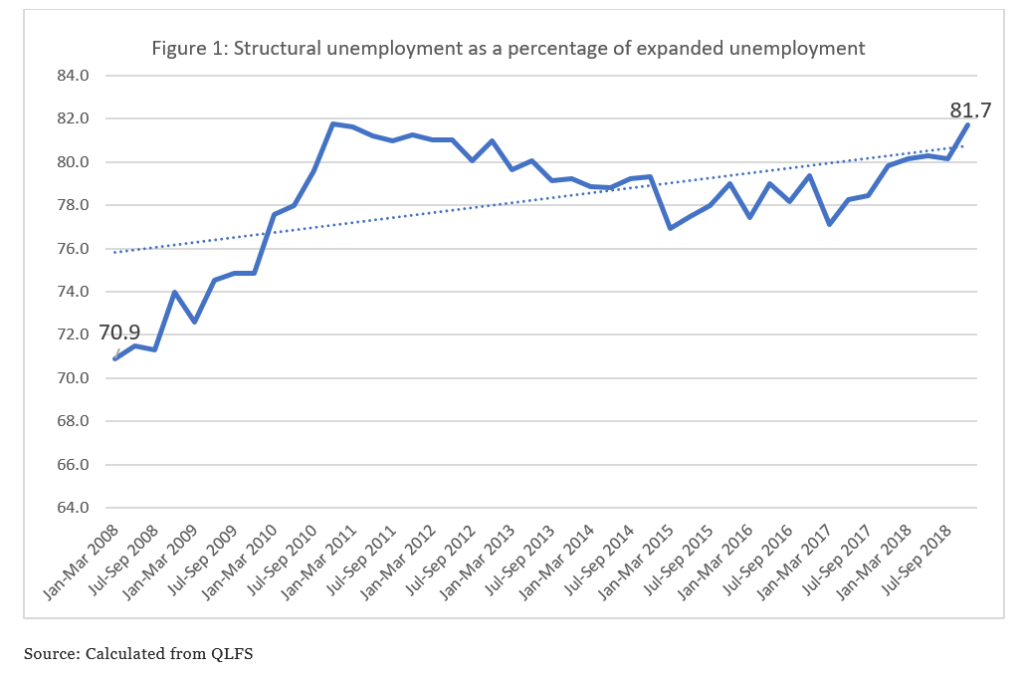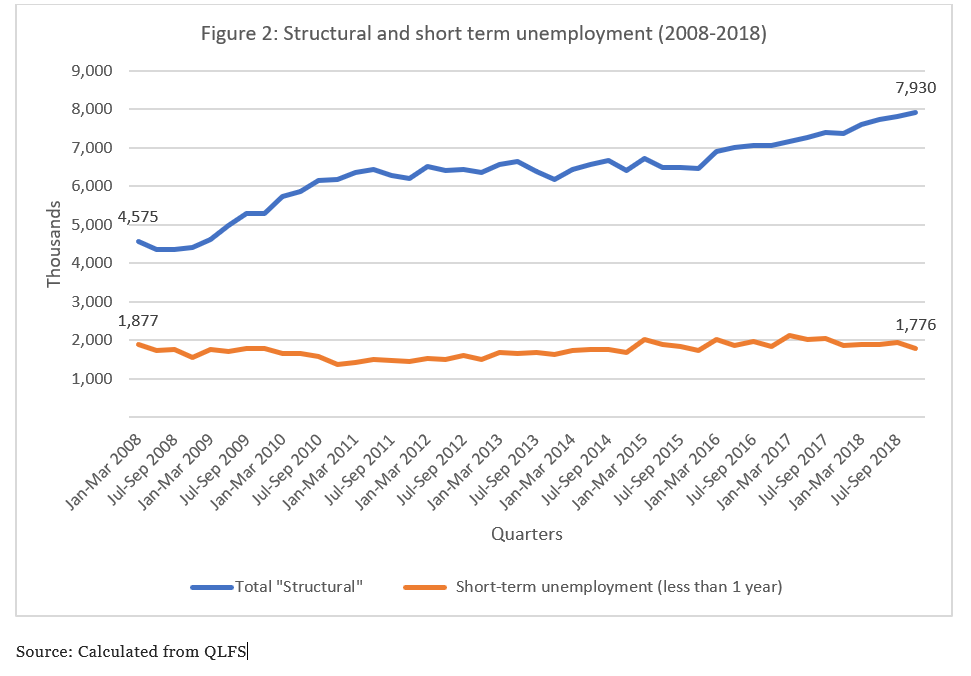Unemployment is either “frictional” or “structural”. In textbooks the definitions are precise, but for this article:
- Frictional means one is likely to get a job fairly quickly through job searching
- Structural means that one is unlikely to get a job even if one searches over an extended period.
These concepts are constructed around:
- Supply and demand: In the case of ‘frictional’ unemployment supply and demand will meet in the market. In the case of ‘structural’ unemployment the supply and demand do not meet.
- Time: ‘Frictional unemployment’ resolves itself over a brief period of time requiring the unemployed to search more efficiently. Structural unemployment does not resolve itself over time even if better search strategies are employed.
Unemployment definitions
The statistical publications in South Africa do not provide a definition of “frictional” and “structural” unemployment. The Quarterly Labour Force Survey (QLFS) however provides several useful definitions, including:
- Unemployed – person 15-64 actively looking for work.
- Long-term unemployment – person 15-64 actively looking for work or to start a business for more than a year.
- Expanded definition of unemployment includes discouraged work seekers and others that are available for work but no longer seeking employment.
The fuller definitions are available in the Quarterly Labour Force Survey (QLFS) or at this link.
Counting Structural Unemployment
A measure of structural unemployment is constructed by combining the discouraged workers and the long term unemployed. The measure if as follows:
Structural unemployment =Discouraged work seekers + Long term unemployment
This calculation has five advantages:
- Simplicity: The calculation is straightforward and uses the existing data.
- Accuracy: There is no double counting in the data.
- Transparency: The data is openly available.
- Relevance: It tracks unemployment, a pressing social problem.
- Transformative: The data raises questions on the appropriateness of public policy .
Findings
Using this calculation, we find that:
- As a percentage of expanded definition of unemployment, 81.7 are structural unemployment. See Figure 1below:

Structural unemployment as a percentage of total unemployment has grown from 70.% to 81.7% in ten years. This is a devastating finding.
2. The gap between structural unemployment and short-term unemployment is growing as shown in Figure 2 below:

Conclusion
A useful lens on calculating structural unemployment is developed. This simple calculation helps us to understand the problem, its magnitude and test policy recommendations against this reality. It tells us that we face a structural unemployment rate in South Africa of about 37%. By implication only about 3% of unemployment in South Africa could be described as frictional unemployment. This is a crisper and clearer way to express the challenge we face in South Africa. It however still under counts ‘structural unemployment” as one could argue that survivalist business owners undertake activities due to structural exclusion, not opportunity. In turn, it asks us whether public policy responds to the reality of structural unemployment.
(And, suddenly a Basic Income Grant (BIG) or a Right to Work seems more sensible, even modest proposals. And, evidence of “nine wasted years”).


